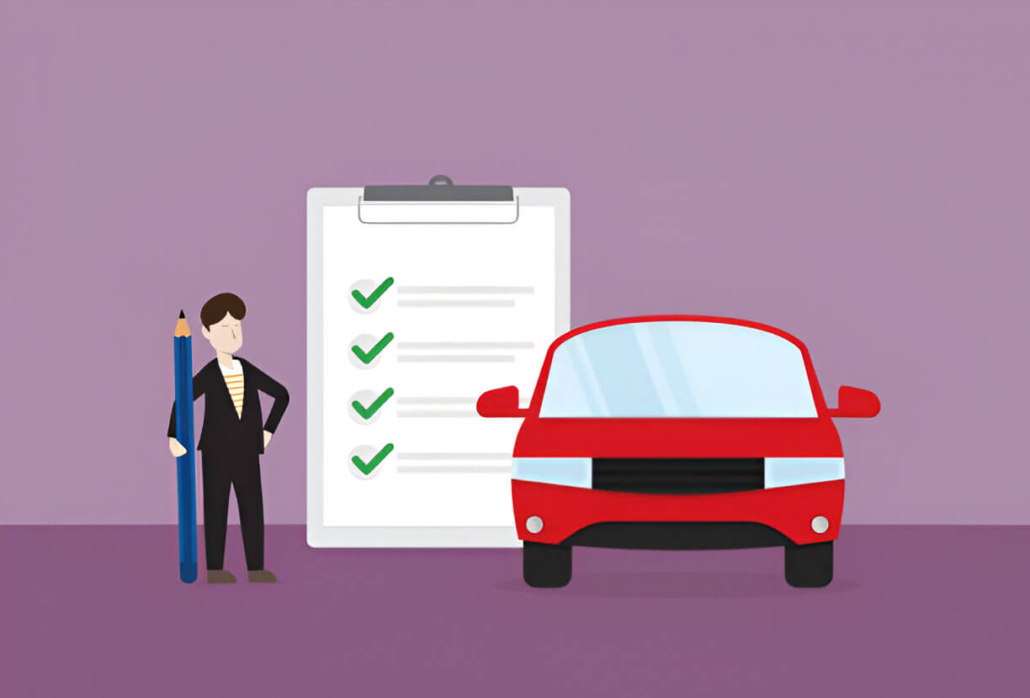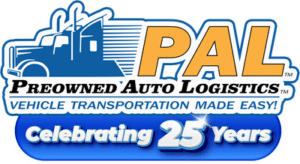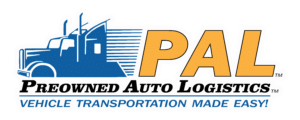Modernizing Vehicle Shipping: The Shift to Electronic Bills of Lading
Modernizing Vehicle Shipping: The Shift to Electronic Bills of Lading
The auto transport industry is digitizing rapidly, with electronic Bills of Lading (eBOLs) leading the charge. In 2024, U.S. transporters moved 40 million vehicles, relying on the Bill of Lading (BOL) to record shipment terms and vehicle conditions. Paper BOLs are prone to delays and errors and frustrated customers due to long waiting times for a mailed document confirming the truck’s delivery. eBOLs eliminate these issues, offering speed, accuracy, and transparency. By embracing digital tools, transporters streamline operations and enhance customer trust, meeting the demands of modern logistics.
What Is a Bill of Lading in Vehicle Shipping?
A Bill of Lading (BOL) is a legal document issued by a transporter to a shipper in vehicle shipping, outlining critical details, including the vehicle’s make, model, condition, pickup and delivery locations, and agreed-upon terms. The BOL acts as a contract, receipt, and proof of ownership transfer during transit, ensuring clarity between all parties.
The BOL holds legal weight, serving as evidence in disputes over damage, delivery delays, or contract breaches. It documents the vehicle’s condition at pickup and delivery, protecting both the customer and the transporter. Signed by all parties, it confirms agreement on terms and verifies the vehicle’s state, reducing liability risks.
For customers, the BOL ensures transparency by confirming that their vehicle is handled as agreed upon. For transporters, it provides a clear record of responsibilities and protects against false claims. This mutual accountability fosters trust and smooth transactions, making the BOL indispensable in vehicle shipping.
The Rise of Electronic Bills of Lading (eBOL)
An electronic Bill of Lading (eBOL) is a digital version of the traditional paper BOL, created, stored, and shared electronically. Unlike paper BOLs, which require physical handling and mailing, eBOLs are accessible via cloud platforms, mobile apps, or email. They contain the same critical information, vehicle details, terms, and conditions but in a more efficient format.
How eBOLs Differ from Paper BOLs
Paper BOLs are prone to loss, damage, or delays in sharing, often requiring manual entry and physical signatures. eBOLs eliminate these issues with digital features like electronic signatures, real-time updates, and automated data entry. They reduce paperwork, minimize errors, and enable instant sharing among customers, transporters, and brokers.
| Feature | Paper BOLs | eBOLs |
| Format | Physical document | Digital document |
| Prone to Loss/Damage | High (can be lost, damaged, or misplaced) | Low (stored digitally, easily recoverable) |
| Delivery/Sharing | Slow (requires physical transport or mailing) | Instant (shared electronically in real-time) |
| Data Entry | Manual (prone to human error) | Automated (reduces errors, integrates with systems) |
| Signatures | Physical (requires in-person signing) | Electronic (supports remote, secure e-signatures) |
| Error Rate | Higher (due to manual processes) | Lower (automated validation and data consistency) |
| Paperwork | Extensive (requires printing, filing, storage) | Minimal (digital storage, no physical paperwork) |
| Real-Time Updates | Not possible (requires manual updates and redistribution) | Enabled (instant updates shared with all parties) |
| Accessibility | Limited (dependent on physical document location) | High (accessible anytime, anywhere via digital platforms) |
| Integration with Systems | Limited (requires manual data re-entry into systems) | Seamless (integrates with logistics and ERP systems) |
| Environmental Impact | Higher (paper usage, printing, transport) | Lower (paperless, eco-friendly) |
| Cost Efficiency | Lower (printing, storage, and transport costs) | Higher (reduces operational costs through automation) |
In demand due to advanced technology
eBOLs leverage advanced technology for enhanced functionality. Cloud storage ensures secure, 24/7 access to documents from any device, reducing the risk of lost records. Electronic signatures expedite approvals, eliminating the need for in-person sign-offs. Real-time tracking integration allows customers to monitor their vehicle’s status alongside the eBOL, creating a seamless experience.
Increased usage of mobile devices
The widespread use of mobile devices in logistics has accelerated eBOL adoption. Drivers use tablets or smartphones to generate eBOLs, capture vehicle photos, and log condition reports at pickup and delivery. Customers access eBOLs through apps or email, enabling quick reviews and approvals. This mobile-driven approach streamlines communication and boosts efficiency across the shipping process.

Key Benefits of eBOLs for Auto Transport Customers
Now let’s explore the key benefits of eBols for customers looking to transport their vehicle(s):
Enhanced efficiency
eBOLs eliminate time-consuming manual tasks like printing, faxing, or mailing documents, enabling transporters to focus on delivery. Automated data entry reduces administrative burdens, while instant sharing via cloud platforms ensures all parties—customers, drivers, and brokers—access documents immediately, accelerating coordination and approvals. This efficiency cuts processing times significantly, often reducing document handling from days to minutes.
Improved accuracy
Digital templates and automated fields in eBOLs minimize errors, such as incorrect vehicle identification numbers (VINs) or omitted shipment terms. Electronic inspections, supported by timestamped data entries, provide precise records of vehicle condition, reducing disputes over damages. Standardized formats and mandatory fields ensure complete documentation, enhancing trust and simplifying claim resolutions between customers and transporters.
Superior customer experience
eBOLs deliver transparency through instant document access and real-time shipment updates, empowering customers with complete visibility. Electronic signatures enable quick, secure approvals via mobile devices, while cloud storage ensures records remain accessible indefinitely. Integration with tracking systems allows customers to monitor their vehicle’s journey, creating a seamless, user-friendly experience that builds confidence and satisfaction.
Challenges and Solutions
While eBOLs offer significant benefits, such as efficiency, cost savings, and transparency, their implementation faces several challenges. Below, we outline the key challenges in adopting eBOLs, followed by practical solutions to address them, ensuring a seamless transition to digital trade documentation.
#1. Legal and regulatory barriers
The legal recognition of eBOLs varies across jurisdictions, creating uncertainty for global trade participants. Many countries still require paper-based Bills of Lading for customs, tax, or legal purposes, as their legal frameworks have not been updated to accommodate digital documents. The lack of harmonized international standards, such as those under the United Nations Commission on International Trade Law (UNCITRAL), complicates cross-border acceptance. Additionally, concerns about digital signatures, enforceability, and compliance with local regulations hinder widespread adoption.
Solution
To address legal and regulatory barriers, governments and international organizations must collaborate to establish globally recognized standards for eBOLs. The UNCITRAL Model Law on Electronic Transferable Records (MLETR) provides a framework for the legal recognition of digital trade documents, and countries should adopt and implement it. Industry associations can advocate for regulatory reforms, while pilot programs can demonstrate eBOL compliance with existing laws. Digital signatures and blockchain-based authentication can enhance enforceability, ensuring eBOLs meet legal requirements across jurisdictions.
#2. Technological infrastructure and Interoperability
eBOL systems rely on advanced technologies like blockchain, cloud platforms, and digital signatures, but not all stakeholders have the infrastructure to support them. Small and medium-sized enterprises (SMEs) often lack access to sophisticated digital tools or the resources to integrate with eBay platforms. Furthermore, interoperability issues arise when different eBOL systems use incompatible formats or protocols, preventing seamless data exchange between shippers, carriers, and customs authorities.
Solution
To overcome infrastructure and interoperability challenges, eBOL platforms should prioritize user-friendly, scalable solutions accessible to all stakeholders. Cloud-based platforms can reduce the need for expensive hardware, enabling SMEs to participate. Open-source standards and APIs can improve interoperability, allowing different eBOL systems to communicate seamlessly. Partnerships between technology providers and trade organizations can offer subsidized access to digital tools, while training programs can build technical capacity among users.
#3. Security and fraud risks
Digital documents are vulnerable to cyberattacks, data breaches, and fraud. Unlike paper documents, eBOLs can be targeted by hackers attempting to manipulate shipment details, forge digital signatures, or steal sensitive trade information. The decentralized nature of some eBOL platforms, such as those using blockchain, introduces additional complexities in ensuring data integrity and preventing unauthorized access. Stakeholders may hesitate to adopt eBOLs due to concerns about cybersecurity and the potential financial or legal consequences of breaches.
Solution
Robust cybersecurity protocols are essential to mitigate security and fraud risks. eBOL platforms should employ end-to-end encryption, multi-factor authentication, and regular security audits to protect data. Blockchain technology can enhance transparency and immutability, ensuring that eBOLs cannot be altered without consensus. Collaborating with cybersecurity experts to develop standardized protocols can build trust among stakeholders. Additionally, insurance products tailored to digital trade risks can provide financial protection against breaches, encouraging adoption.
#4. Stakeholder resistance and lack of awareness
Resistance to change is a significant barrier, particularly among stakeholders accustomed to paper-based processes. Many businesses, especially in developing regions, lack awareness of eBOLs’ benefits or distrust digital solutions due to unfamiliarity. Training employees to use eBOL platforms and convincing stakeholders like freight forwarders, banks, and insurers to transition require substantial effort. This resistance is compounded by the perceived complexity of digital systems and the fear of operational disruptions during the transition.
Solution
Overcoming stakeholder resistance requires targeted education and engagement. Industry leaders, trade associations, and governments can launch awareness campaigns highlighting eBOLs’ benefits, such as reduced paperwork, faster processing, and lower costs. Case studies showcasing successful eBOL implementations can build confidence. Training programs, both online and in-person, can equip stakeholders with the skills to use eBOL platforms effectively. Incentives, such as tax breaks or subsidies for early adopters, can accelerate the transition and demonstrate tangible benefits.
#5. Cost of Transition
While eBOLs promise long-term cost savings, the initial investment can be prohibitive. Developing or subscribing to eBOL platforms, upgrading IT systems, and training staff incur significant expenses. For SMEs and organizations in low-margin industries, these costs can outweigh the perceived benefits, especially if the return on investment is not immediate. Additionally, ongoing maintenance and subscription fees for eBOL platforms add to the financial burden.
Solution
To address the cost of transition, eBOL providers can offer tiered pricing models, allowing businesses to choose plans based on their needs and budgets. Governments and international organizations can provide grants or low-interest loans to support SMEs in adopting eBOLs. Public-private partnerships can develop shared infrastructure, reducing individual costs. Demonstrating the long-term cost savings of eBOLs, such as reduced administrative expenses and faster trade cycles, can justify the initial investment. Additionally, integrating eBOLs with existing systems can minimize disruption and lower implementation costs.
How Preowned Auto Logistics Uses eBOLs
Preowned Auto Logistics (PAL) leverages electronic Bills of Lading (eBOLs) to streamline its vehicle transport process, eliminating the inefficiencies of paper-based systems. During pickup, drivers use PAL’s digital platform to generate and complete eBOLs on mobile devices, capturing critical details such as vehicle condition, mileage, and transport terms. This information is instantly uploaded to a centralized system, ensuring real-time access for all stakeholders, customers, transporters, and brokers. At delivery, drivers and recipients review and finalize the eBOL, confirming the vehicle’s condition and completing the transaction without physical paperwork. This paperless approach accelerates workflows, reduces administrative overhead, and minimizes delays caused by lost or damaged documents.
Secure handling of digital signatures and data
PAL prioritizes security in its eBOL process by implementing robust encryption and authentication protocols. Digital signatures are collected using secure, legally compliant e-signature technology, ensuring authenticity and non-repudiation. Each eBOL is stored in a tamper-proof digital environment, with access restricted to authorized parties via multi-factor authentication. Data integrity is maintained through automated validation checks, reducing the risk of errors or unauthorized alterations. PAL’s commitment to secure data handling builds trust among customers and partners, ensuring sensitive information remains protected throughout the transport process.
Customer transparency through shared digital documents
eBOLs enhance customer transparency by providing instant access to digital documents via PAL’s online portal or mobile app. Customers receive real-time updates on their vehicle’s transport status, including eBOL details like pickup confirmation, delivery schedules, and condition reports. These documents are shareable with relevant parties, such as insurance providers or brokers, fostering seamless communication. By offering a clear, accessible record of every transaction, PAL empowers customers with greater visibility and control, improving satisfaction and trust in the logistics process.

What Customers Should Know About eBOLs
Customers receive their eBOL via email or PAL’s app, containing vehicle details, inspection notes, and terms. Review the document carefully, checking the VIN, condition report, and shipment details for accuracy. Sign electronically using a secure link or app, which authenticates your approval instantly. PAL’s platform guides users through the process with clear instructions, ensuring ease of use.
Ensuring accuracy before accepting delivery
Before accepting delivery, compare the vehicle’s condition to the eBOL’s inspection notes and photos. Verify that no new damage has occurred during transit. If satisfied, sign the eBOL to confirm delivery. PAL’s drivers assist by reviewing the eBOL with customers on-site, ensuring agreement on the vehicle’s condition before finalizing the process.
- Inspect thoroughly: Check all vehicle surfaces, including bumpers, hood, and sides, against eBOL photos.
- Use good lighting: Examine the vehicle in daylight or under bright lights to spot minor scratches or dents.
- Confirm details: Ensure the VIN and delivery address match the eBOL before signing.
- Ask questions: Request clarification from the driver if any eBOL details are unclear.
What to do in case of discrepancies
If discrepancies arise, such as new damage or incorrect delivery terms, note them on the eBOL before signing. Take photos of any issues and contact PAL’s customer support immediately. PAL’s team investigates promptly, using the eBOL’s detailed records to resolve claims efficiently. Customers can access support via phone, email, or the app for quick assistance.
- Document issues: Mark all discrepancies (e.g., scratches, dents) directly on the eBOL.
- Capture evidence: Take clear, timestamped photos of any damage for reference.
- Contact support promptly: Reach PAL within 24 hours to initiate a claim.
- Retain records: Keep copies of the eBOL and photos until the issue is resolved.
Addressing Concerns About Digital Adoption
Data security and privacy of customer information
Concerns about data security are valid, but PAL addresses them with robust measures. eBOLs are stored on encrypted cloud servers with multi-factor authentication, protecting customer data like VINs, addresses, and payment details. Regular security audits and compliance with data protection regulations, such as GDPR and CCPA, ensure privacy. PAL’s transparent privacy policy outlines how data is handled, reassuring customers.
Technical support and user-friendly platforms
Some customers and drivers worry about navigating digital tools. PAL counters this with a user-friendly eBOL platform featuring intuitive interfaces and step-by-step guides. Dedicated technical support is available 24/7 via phone, email, or live chat, assisting with app access, signature issues, or document retrieval. Training programs ensure drivers are proficient, minimizing errors and delays.
Legal recognition of digital documents
eBOLs are legally recognized in vehicle shipping and compliant with U.S. regulations like the Electronic Signatures in Global and National Commerce Act (E-SIGN). PAL’s eBOLs meet FMCSA and DOT standards, ensuring they hold the same legal weight as paper BOLs in disputes or audits. Customers can rely on eBOLs for claims or legal proceedings, with secure, timestamped records as evidence.
Conclusion
The transition to electronic Bills of Lading (eBOLs) underscores Preowned Auto Logistics’ dedication to innovation and enhancing customer convenience. By embracing digital solutions, we streamline car shipping processes, reduce inefficiencies, and deliver a seamless experience for our clients. Paperless car shipping is not just the future; it’s already here, revolutionizing the industry with greater efficiency, transparency, and sustainability. As Preowned Auto Logistics leads the way, eBOLs are driving the evolution of automotive logistics, setting a new standard for excellence in customer satisfaction.




